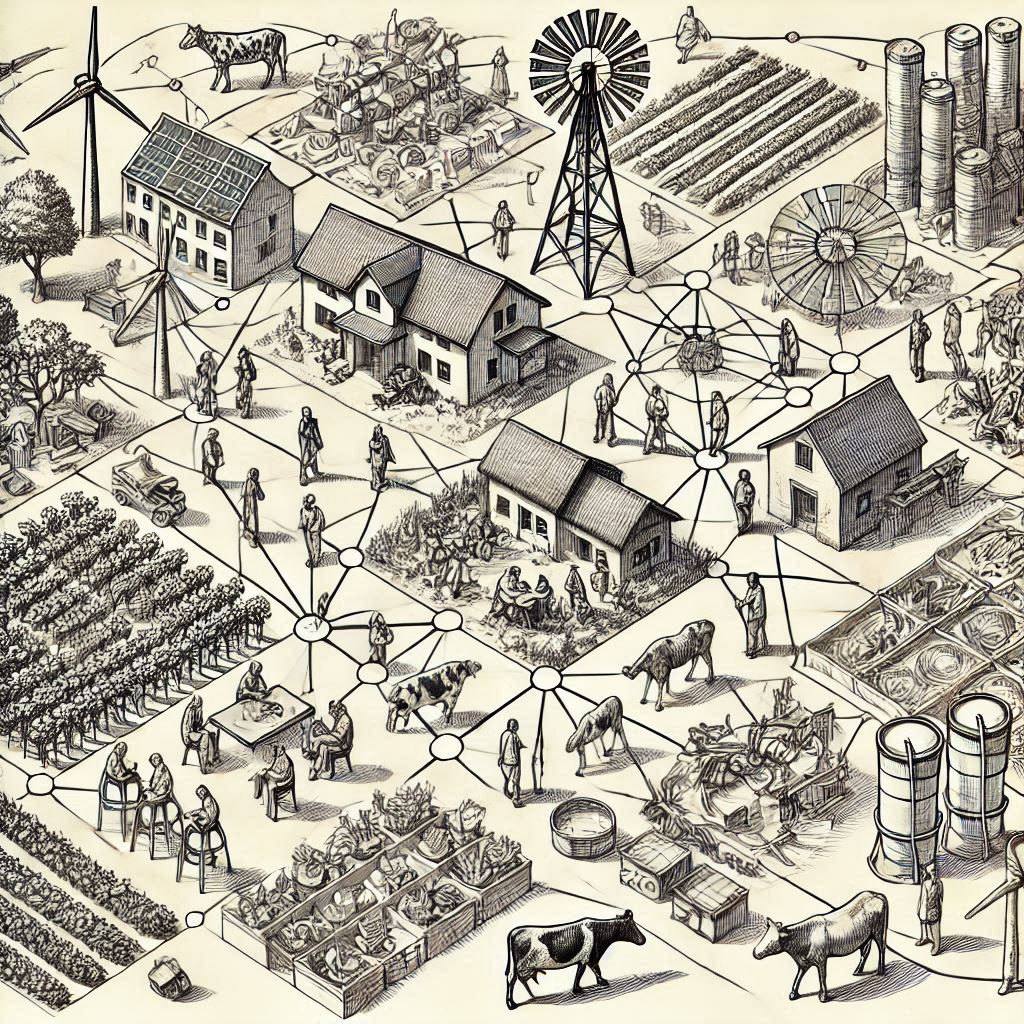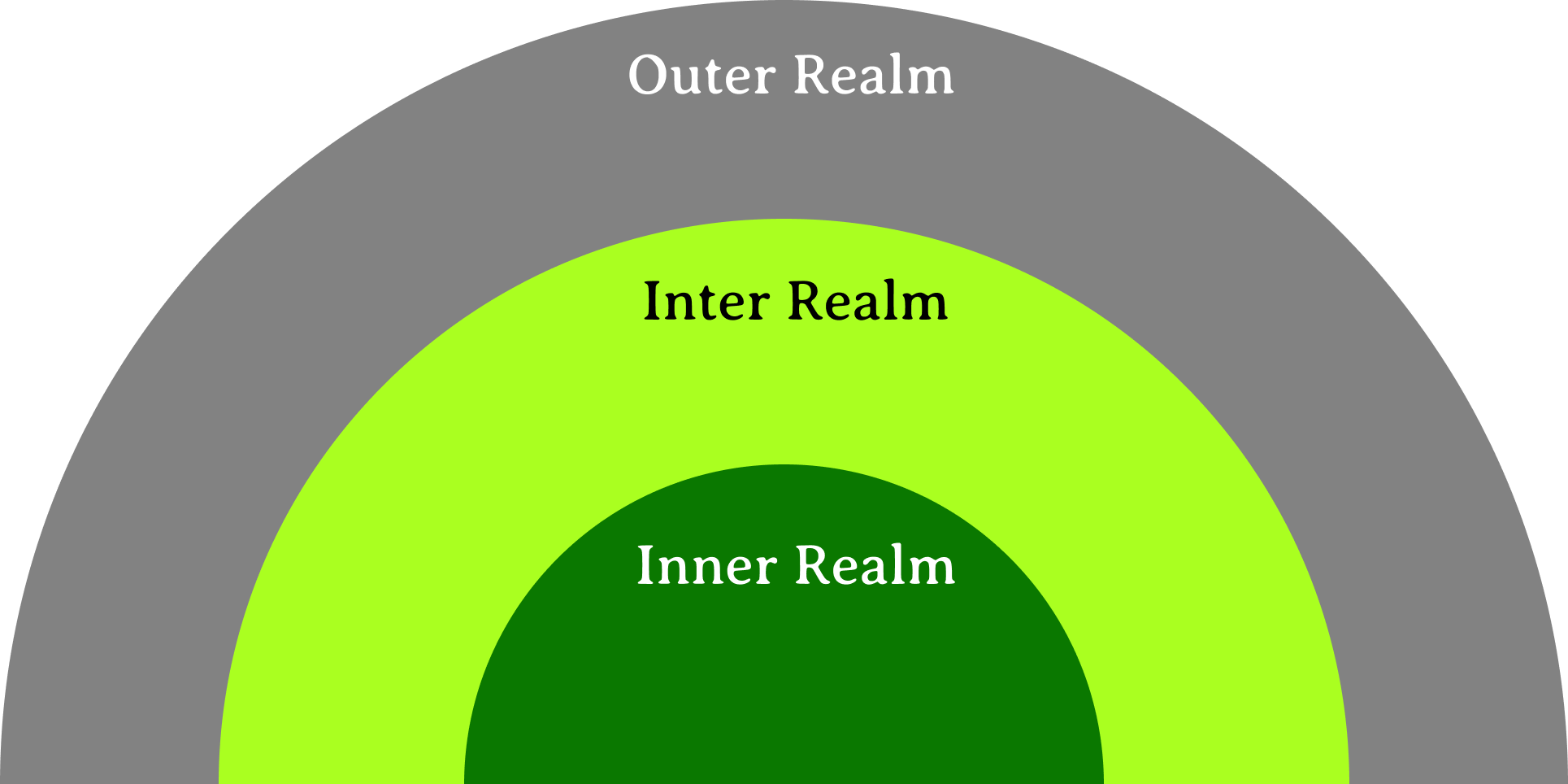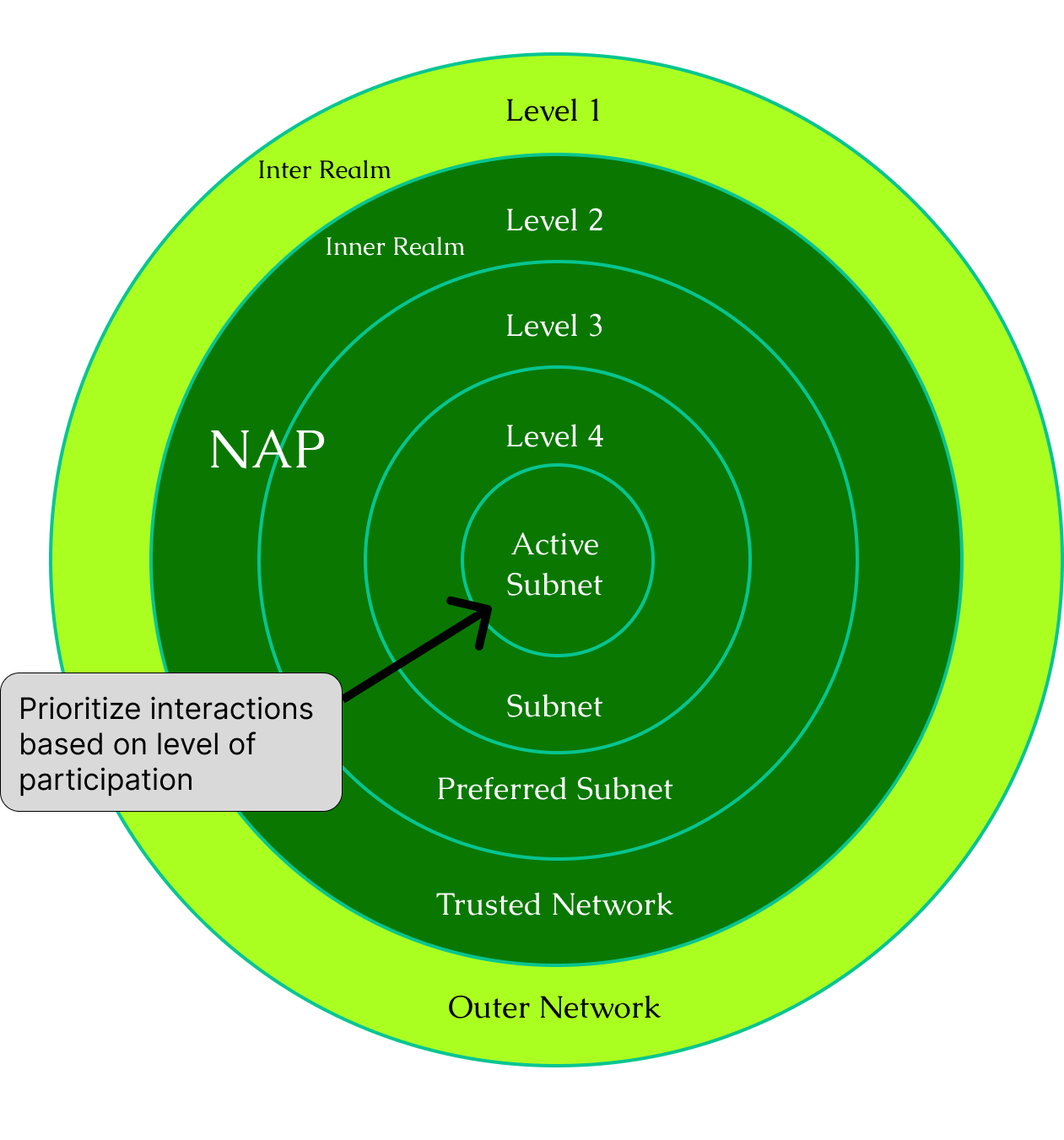
Network Structure
The Agorist Network is designed for clarity, security, and progressive engagement. Understanding it's structure and the different ways you can interact is key to navigating your journey within it.
The Welcome Desk
The Welcome Desk serves as your initial point of contact for anyone eager to learn more about our network and the pathways to a new life within it. Whether you're looking for general information or ready to take your first steps, this is where you can reach out for guidance.
While we're a nomadic community, we strive to provide accessible support. We facilitate connections for in-person support and operate communication channels to assist newcomers. To get started, explore our Choose Your Path page, a valuable resource detailing various ways to get acquainted with or delve deeper into the network.
Understanding the Realm
Our network operates across distinct "realms," each with unique characteristics and levels of engagement designed to protect our principles and foster growth:

Inner Realm:
The fundamental rule here is no rulers and
absolute adherence to the Non-Aggression Principle
(NAP). This space is free from coercion. We
protect certain private spaces for those who have
expressed a clear understanding of our network's
principles and the NAP. While risks are a part of
life, we aim to safeguard what's essential.
Entrance to the network's Inner Realm is managed
through Admissions. You can establish yourself as
a trusted member by connecting with a Network
Host, joining a caravan, or studying materials in
The Library to gain the necessary knowledge. Feel
free to apply at any time.
Inter Realm:
Wherever a caravan travels becomes the Inter Realm. Our buses, adorned with clear signage, often do much of our activism, making our presence known in outer city outposts and other locations. This realm is designed to help people transition and understand that living here isn't an escape from a lack of meaning, but a deliberate path towards finding one's best possible vocation and living situation.
Outer Realm:
The Outer Realm is where we engage in outreach. This is the space you occupy when you're "behind enemy lines," operating in areas where agorists are few, and maintaining even a bubble of freedom requires constant vigilance.

Structuring Your Network: Levels of Engagement

Your journey within our network can deepen through distinct levels, each signifying a greater alignment with our values and a higher degree of trust and shared purpose:
Levels
-
Level 0: The Uninitiated
Individuals who do not value freedom sufficiently to allow others to peacefully coexist. -
Level 1: The Outer Network
People who are willing to trade and interact with our network. -
Level 2: Trusted Network
Those who respect the Non-Aggression Principle (NAP), the self-defense principle, and refrain from advocating for or taking direct action toward the destruction or restriction of your freedom to peacefully conduct yourself and your property as a physical extension of yourself, over which you (the owner) alone possess authority. -
Level 3: Preferred Network
Those from Level 2 who also prioritize interactions with individuals aiming to make freedom more accessible to others. It's a bonus if they can articulate a path towards freedom from coercion in this lifetime. -
Level 4: The Subnet
A subnetwork within the larger network, comprising those who actively seek to grow and strengthen the subnet. -
Level 5: The Active-Subnet
Includes those in your subnet with whom you interact and communicate with on a regular basis. This represents the innermost circle of consistent engagement.
Agorism and Networks
Your “Network” is a physical manifestation of your interactions. Interactions with intention can result in networks with intention, and the clusters and groups of individuals that result therefrom.
Your network already exists. Now, identify your trusted “subnet”, or network of individuals you have established trust with, who share your intention and objective of creating a more free world for themselves and others, and whom you have established sufficient moral and/or ethical common ground with. If they are a potential threat to you or yours, confront them about it and establish healthy boundaries with them. If they do not respect your boundaries, do not consider them a part of your trusted subnet.
Essentially, we are advocating individuals establish decentralized (enclaves), both localized and dispersed, aimed at making freedom more accessible for others. This guide will go into detail about how networks will solve the issue of scaling up from small communities to places that have larger populations.
What has anarchy looked like in action?
The moral philosophy of voluntaryism is not required to posit a working solution for how the world would look without a government as that will be created organically by those involved. Still, there are many resources on times past and present where anarchy has existed or exists.
The concept of a society functioning without a centralized, coercive state might seem radical in today's world, but history offers numerous compelling examples. For millennia, human communities have successfully organized themselves, resolved disputes, and thrived through voluntary association, decentralized governance, and customary law, proving that sophisticated social order doesn't require a monopolistic authority.
Consider the Icelandic Commonwealth, which flourished for over four centuries (930 C.E. - 1262 C.E.) without a centralized executive authority or a standing army. Power was distributed among chieftains whose influence came from the voluntary allegiance of their followers, not from coercive state power. Its national assembly, the Althing, debated laws and resolved disputes, yet lacked any executive power to enforce its rulings. Enforcement relied primarily on private legal action, arbitration, and the social pressure of the community. This period in Icelandic history stands as a testament to maintaining complex social order through decentralized governance and voluntary association.
For a deeper dive into these and other historical examples of flourishing stateless societies, explore our full Anarchy Examples page in The Library.
Link to Anarchy Examples
Strength in Numbers
In order to replace some of the reliance on government police, try coordinating with your friends and neighbors so you show up as a group to the scene of a dispute or incident.